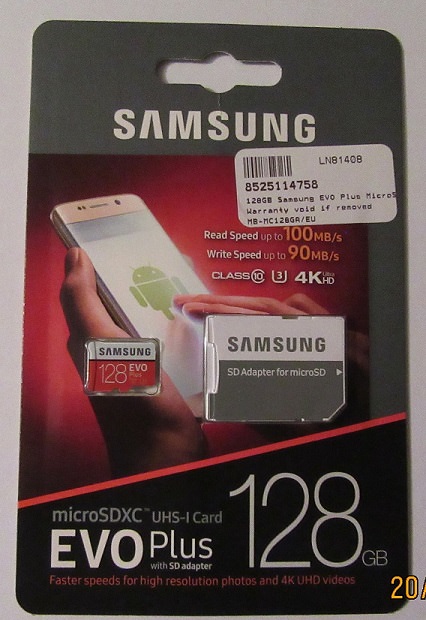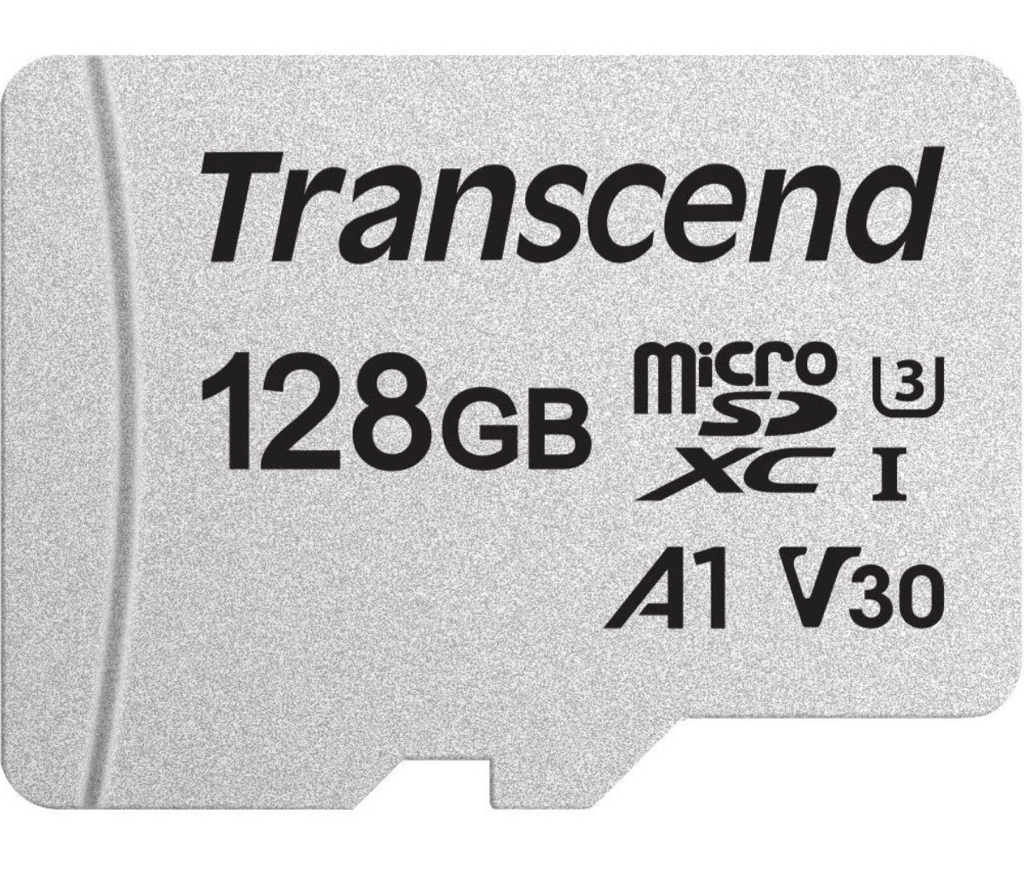Hardcore
New Member
Kingston ones on Ebay have a lifetime warranty and seem to work great for me
You do want to be very careful who you buy microSDs from on eBay - my record is killing an unknown card in less than 5 minutes from eBay (it came free with something)!Kingston ones on Ebay have a lifetime warranty and seem to work great for me

we've returned several hundred of those same cardsThis was the exact Transcend card that didn't work well at all for me on firmware 1.02:
https://www.amazon.co.uk/gp/B07C9PVLN8

can't offer a technical explanation but a few things I am aware of, there a few common controller chipsets that are used in the cards, some seem better than others for our particular use, the card firmware can play a part also, a challenge for end users is that the controller, memory, and firmware can differ from one production to another so even if someone has a good experience with a particular make and model of card, you may have a different experience with the same type of card in the same model camera, the internal changes of a memory card are not referenced in the packaging at all so it's really impossible for an end user to know for sure
I would say that top tier brands tend to change the internals less often so are going to have a greater chance of providing a consistent result over a longer production period, High Endurance cards in particular have tighter standards when it comes to controller and firmware
for sure it's like a black art trying to work this stuff out, some companies (the Korean's) like to sell their own branded memory cards and target their firmware to the particular controller chipsets used, they cop a lot of flack for this due to generally being about three times dearer for their cards than the market prices, one of the problems with the way they do things is it restricts a lot of other cards from working, in one respect I get it as they're trying to make sure it works, reduce support calls etc, if they offered their cards at something closer to market pricing it would probably be something consumers appreciateAppreciate your answer as it offers "some" level of plausible explanation. Still feels like some sort of digital Voodoo though.I guess we're all still stuck with having to figure out what works and what doesn't, which is one of the reasons why I appreciate this forum. Folks that run into these issues without any objective feedback about others experiences are just cast adrift out there.
we don't make anything on cards bundled with cameras, sometimes we lose out on the deal by including the card due to having to buy quantity and and prices dropping before we use the stock, nature of the beast though as memory pricing is very volatile at the best of times (the silicon is traded like the stock market and prices are set three times per day)I remember when you started including specific memory cards with your cameras. Clearly, and I think you even mentioned at the time that the reasoning for this was to avoid customer service issues from buying who might stick some crappy thing into the camera, have an issue and then blame Street Guardian for the experience. Including a memory card you know will work makes for a nice initial customer experience and that's good business. I like how you simply include a card you believe will work well with your cameras but don't "require" that anyone use one particular card or another. I don't know what sort of margins you have on those included cards but you don't seem to be gouging on the price. Maybe you just break even?
we don't make anything on cards bundled with cameras, sometimes we lose out on the deal by including the card due to having to buy quantity and and prices dropping before we use the stock, nature of the beast though as memory pricing is very volatile at the best of times (the silicon is traded like the stock market and prices are set three times per day)
unfortunately a lot of consumers think that all cards are the same, they don't see any moving parts so make the assumption that a card is a card
worse than that though is human nature is to look for a deal and there's a lot of fake memory in the market still today, by including a card at least when we get people opening support tickets with random problems we can have them try their original card for troubleshooting, all too often people do get caught out with fake cards, and you're right, they just blame the camera, to the user that thinks all cards are the same, no moving parts etc this is their logical diagnosis, I get why they think that but it doesn't fix the problem
I suspect the problem with the recent cards is because back in the days of Class 6, the microSD specification said that the card had to accept 6MBytes per second, so even the worst Class 6 cards were guaranteed fast enough. Since UHS came along with U1 and U3, the spec does not require the card to maintain any speed, it only requires an average speed, and requires the device that it is using it to provide buffering. Now most of our cameras are still using the old pre-UHS communications specification, so are not providing the buffering required for some modern cards to work. I guess that this will get sorted when our dashcam processors catch up and start using the UHS specification, which will happen soon because Class 10 is not fast enough for a dual 4K camera, so these will have to start using the UHS bus, and then shortly after the microSD specification will change again with a new class of super high speed card that will introduce more problems! Not sure about any of this, very difficult to find out what sort of microSD interface is provided on the processor chips, and I guess most dashcam manufacturers just use what is provided without looking into it.I've been around dash cams for quite a while now and this issue with certain memory cards working or not working with any given camera has been around for a long time, going all the way back to the original Mobius action camera in my experience. And many times certain memory cards that are said to have issues with certain cams have worked flawlessly for me.....and then again, some that should, don't. It's all like some sort of weird Voodoo. Can anyone offer an accurate technical explanation for this phenomenon in otherwise decent quality, name brand memory cards?
I brought this up with Transcend Taiwan when we started having problems with the cards, their reply was basically can't be used for dashcams, the sales department responsible never should have sold them to you, please send them back for creditI've done some testing this morning and the Transcend gives some surprising results - I've done a separate post here as it's detailed - https://dashcamtalk.com/forum/threads/why-the-transcend-ts128gusd300s-was-so-bad-in-dashcams.40054/
It gives some very interesting results in FAT32 mode vs exFAT though so there's something wrong at the controller level but does explain why I saw the issues I did and that not even a format would fix.
I've been around dash cams for quite a while now and this issue with certain memory cards working or not working with any given camera has been around for a long time, going all the way back to the original Mobius action camera in my experience. And many times certain memory cards that are said to have issues with certain cams have worked flawlessly for me.....and then again, some that should, don't. It's all like some sort of weird Voodoo. Can anyone offer an accurate technical explanation for this phenomenon in otherwise decent quality, name brand memory cards?
Sure, Technically speaking..... Poor design and BAD quality control!
I agree with you that we would expect the name brand cards to perform well but we all know the best of cards don't always perform in all cameras. Actually for what the average camera sells for I think we aren't doing badly, but then you throw in the cards that are totally made on equipment without any human intervention then there is a problem! The manufactures know if they run off a bad batch and the public does the Quality Control they just have to reduce the price and sell off that batch while correcting the problem in the next batch changing some identifier/color scheme on the card so the public thinks it is something new and throw it on the shelves for sale. Stopping a production run and allotting the time to thoroughly run the card through inspection is something they do not want to do if at all possible. That's why when there is a problem with a particular brand of card/item that just about everyone has problems and ends up here (DCT) to figure out what is going on and basically the first thing said is usually "Have you tried a different card".Poor design doesn't seem to explain why certain cards work well in certain dash cams and not others and vice versa. Buffering may offer an explanation of sorts but this doesn't account for the inconsistencies in performance between some cards and cameras where we have some people reporting good success while others report problems given the same cams and cards. Not sure about the quality control factor but one might expect name brand cards (especially higher end ones) should perform well and do so consistently.
